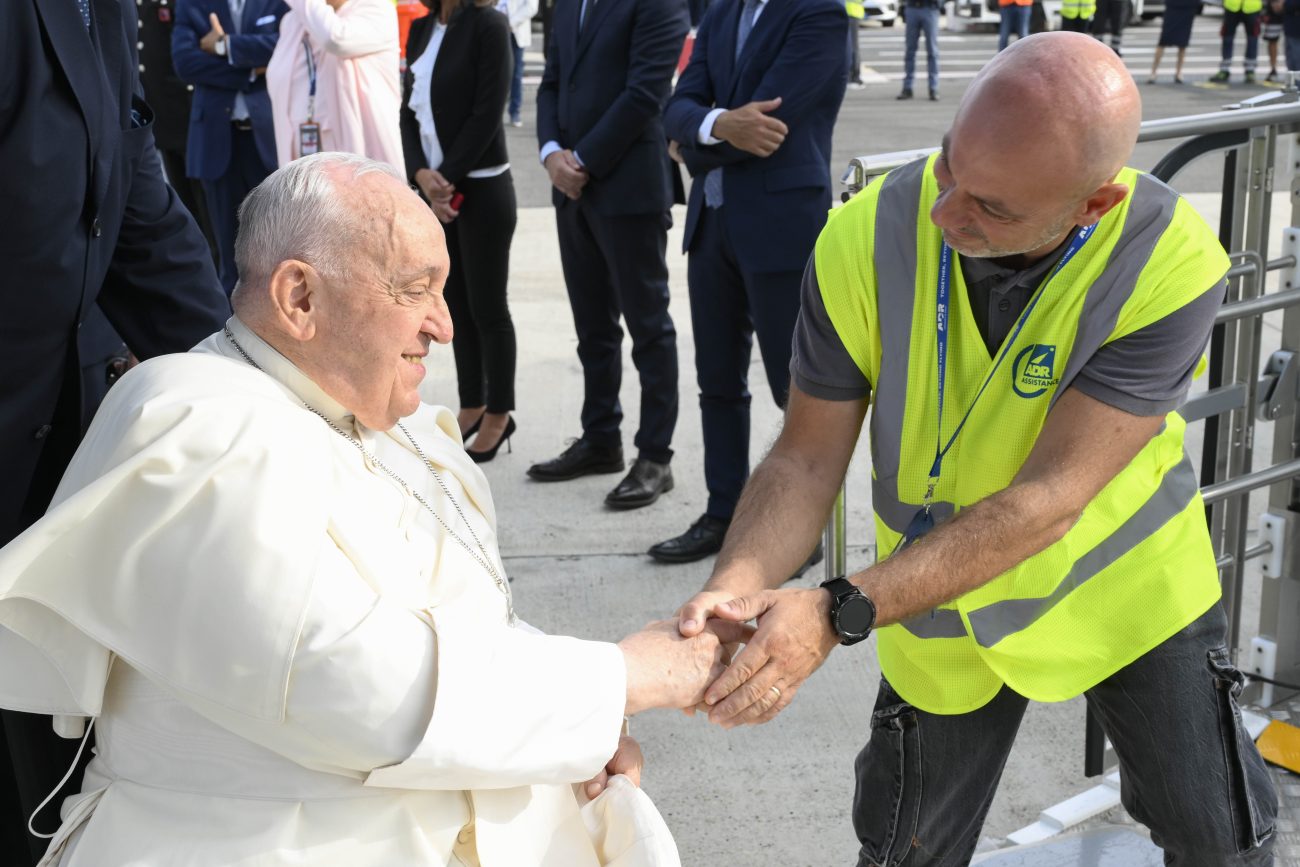ROME (CNS) — Traveling on an ITA Airways plane, Pope Francis set off on the longest foreign trip of his papacy.
The plane carrying the pope, top Vatican officials and about 75 journalists took off from Rome’s Fiumicino airport Sept. 2 on what was scheduled to be a 13-hour flight to Jakarta, Indonesia, the first stop on the pope’s four-nation apostolic visit.
The 87-year-old pope was expected to cover more than 20,000 miles during his visit Sept. 2-13 to Indonesia, Papua New Guinea, Timor-Leste and Singapore.
Cardinal Luis Antonio Tagle, pro-prefect of the Dicastery for Evangelization and a member of the papal entourage, told Fides, his dicastery’s news agency, that the pope is not trying to set a record or prove a point about his stamina.
Rather, he said, subjecting himself to the rigors of such a long trip “is an act of humility before the Lord who calls us — an act of humility and obedience to the mission.”
Pope Francis “wants to encourage Catholics in all the contexts in which they find themselves,” the cardinal said in the interview published Aug. 27. “Asia is home to two-thirds of the world’s population. The majority of these people are poor. And there are many baptisms among the poor. Pope Francis knows that there are many poor in those areas, and among the poor there is an attraction to the figure of Jesus and to the Gospel, even in the midst of war, persecution and conflict.”
Interreligious dialogue, care for creation and the fair treatment of immigrants are expected to be issues the pope touches on in each of the four countries. He is also likely to call on local Catholics to pick up the missionary mantle, building on the work of the missionaries who first shared the faith and, in many cases, built networks of schools and hospitals.
Indonesia is a predominantly Muslim nation, and Catholics account for only about 3% of the population. Almost all the people of Papua New Guinea are Christian and about 30% of them are Catholic. Timor-Leste is the only nation on the itinerary where Catholics are the majority; the Vatican estimates that 96% of the population belongs to the church. In Singapore, Buddhists make up the largest religious group — about 31% — followed by 20% of the population claiming no religious belief; Christians account for almost 19% of the population and Muslims about 15%.
Archbishop Paul R. Gallagher, the Vatican foreign minister, told the Italian magazine L’Espresso that the trip “incarnates” Pope Francis’ constant call for Catholics to go out to the “peripheries.”
The trip to Asia and Oceania, he said, does so “certainly from a geographical point of view, but also in light of the great cultural and religious diversity of the countries he will visit. From this perspective, the trip represents the concern and closeness of the Holy Father to everyone — Catholics and non-Catholics — based on the conviction that we are ‘fratelli tutti'” — all brothers and sisters.
Care for creation will be another big theme of the visit, he said, particularly because all four countries are island nations exposed to the dangers of rising sea levels. In fact, Indonesia is building a new capital city to replace Jakarta, which is known as “the fastest-sinking megacity on the planet.”
PREVIOUS: Migrant Morality: Pope Doubles Down on Message of Acceptance
NEXT: Pope Arrives in Indonesia at Start of Four-Nation Tour




Share this story